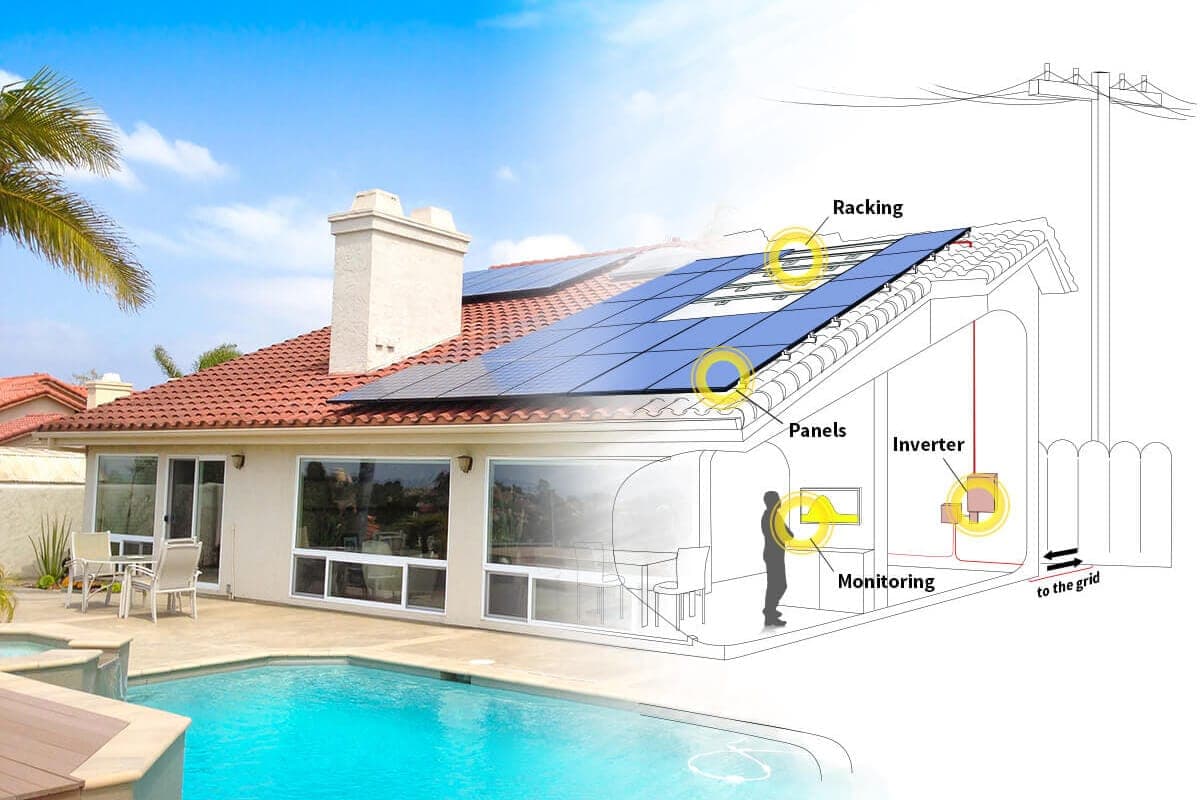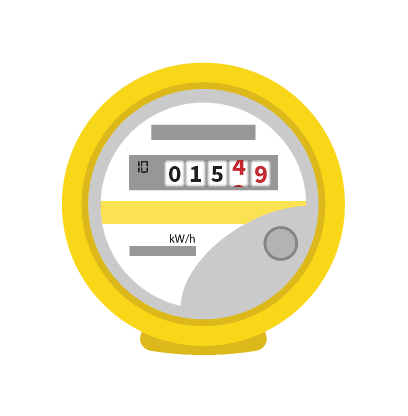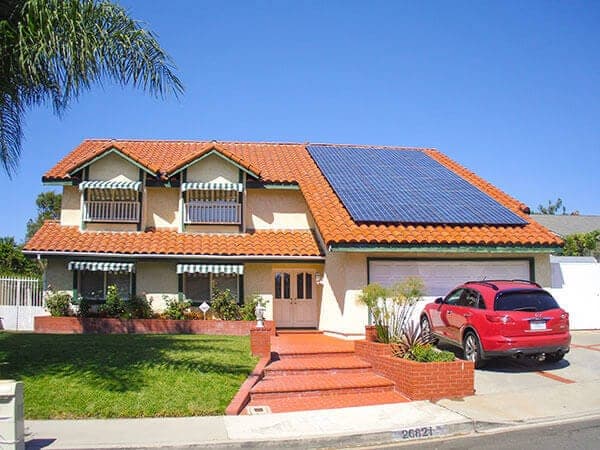How Does Solar Power Work?
The diagram below shows the components of a Sullivan Solar Power system and will give you an understanding of how our systems work.


Modules
Solar modules are the most expensive component of a solar power system. Also known as the solar power panels, they are the elements that sit on your roof and collect photons from the sun’s rays and turn them into direct current electricity. The modules we provide carry a 25-year warranty.

Inverter
The inverter is the component that converts the direct current electricity from your modules to alternating current electricity to be used in your home. Your inverter will be placed in your garage or on the outside of your home for easy access. The inverters we install have a 20-year warranty.

Racking
Solar racking interfaces with your roof to ensure structural stability of the system and watertight roof connections. The systems we provide use Anodized aluminum and stainless steel components with life expectancies in excess of 25 years and carry a 10-year manufacturer warranty.

Monitoring
A monitoring platform shows what your system is producing in real time via a web connection allowing both you and our service department to track system performance and respond to any system failures in the unlikely event one should occur.
We provide system monitoring for 25 years.
When sunlight strikes your solar panel array, a direct current (DC) is generated through a reaction called the photovoltaic effect. The DC current is routed from the array down to your inverter, which is the brain of your photovoltaic system. The inverter takes the DC current from the solar array and transforms it into alternating current (AC) which is what is used in your home. The energy is then routed from your inverter to your main electrical panel, where it can supply all of the electrical loads inside your home. If your home is using more energy than your solar power system is producing, you will pull energy from the utility grid, meaning you will always have energy. If your system produces more energy than you use, the excess energy goes out to the public grid and you are compensated for it through a process called net metering.
What is Net Energy Metering (NEM)?
Net energy metering is a billing arrangement for utility customers who have solar power systems on their homes. Through net metering, solar power users can build up credits by generating energy for the public power grid and use those credits to pay their utility bills at the end of the year during what is called a “true up.” Your true-up date is set according to when you receive permission from your utility to turn on your solar power system.
The goal is to earn enough solar power credits to pay 100% of your monthly utility bill.

During the winter months when there is less sunshine on your solar panels, you might use more power from the grid to power your home, resulting in a debit to the utility. In the sunny summer months, your system likely will generate more power than you use and you will receive a credit to your net metering account. For solar power customers, the goal of net metering is to earn enough credits to pay 100% of your annual utility bill on your annual true-up date.
A Properly Designed and Installed System is Key

It is important to note that solar power only “works” if you have a system that is properly designed and installed on your property.
Buying some solar panels and an inverter and slapping them on your roof is not going to produce the results you desire.
Think of a solar energy system as a power plant on your roof. Your local utility uses licensed electricians to work on its power plants, so shouldn't you do the same with yours? Using substandard labor to install your system components or using unproven products can increase your risk of fire and electrocution while limiting the performance of your system.
Therefore, when hiring a solar power company, make sure you consider only those that use licensed electricians and have proven quality assurance and quality control processes in place to help ensure optimal system performance.